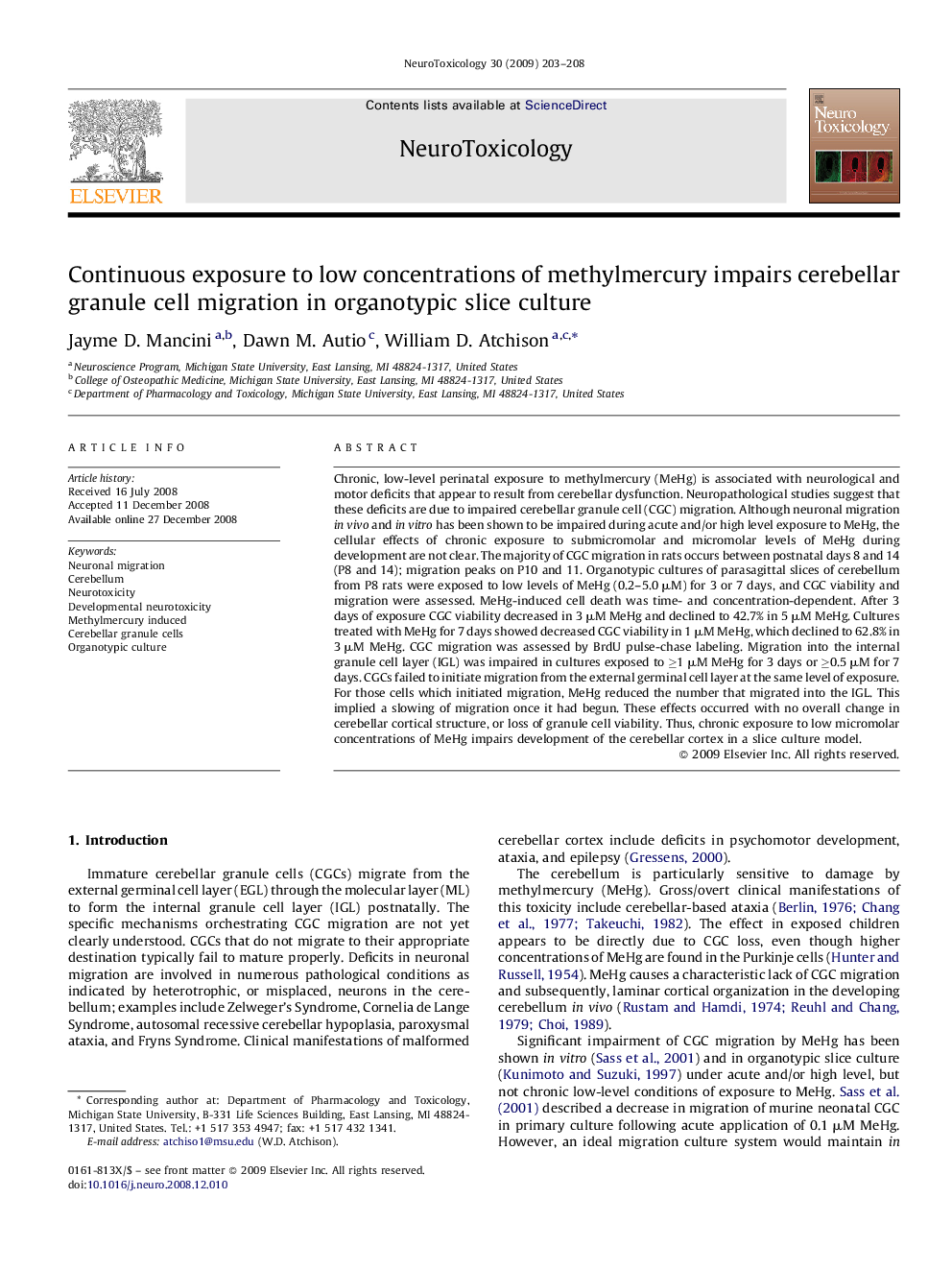| Article ID | Journal | Published Year | Pages | File Type |
|---|---|---|---|---|
| 2590236 | NeuroToxicology | 2009 | 6 Pages |
Chronic, low-level perinatal exposure to methylmercury (MeHg) is associated with neurological and motor deficits that appear to result from cerebellar dysfunction. Neuropathological studies suggest that these deficits are due to impaired cerebellar granule cell (CGC) migration. Although neuronal migration in vivo and in vitro has been shown to be impaired during acute and/or high level exposure to MeHg, the cellular effects of chronic exposure to submicromolar and micromolar levels of MeHg during development are not clear. The majority of CGC migration in rats occurs between postnatal days 8 and 14 (P8 and 14); migration peaks on P10 and 11. Organotypic cultures of parasagittal slices of cerebellum from P8 rats were exposed to low levels of MeHg (0.2–5.0 μM) for 3 or 7 days, and CGC viability and migration were assessed. MeHg-induced cell death was time- and concentration-dependent. After 3 days of exposure CGC viability decreased in 3 μM MeHg and declined to 42.7% in 5 μM MeHg. Cultures treated with MeHg for 7 days showed decreased CGC viability in 1 μM MeHg, which declined to 62.8% in 3 μM MeHg. CGC migration was assessed by BrdU pulse-chase labeling. Migration into the internal granule cell layer (IGL) was impaired in cultures exposed to ≥1 μM MeHg for 3 days or ≥0.5 μM for 7 days. CGCs failed to initiate migration from the external germinal cell layer at the same level of exposure. For those cells which initiated migration, MeHg reduced the number that migrated into the IGL. This implied a slowing of migration once it had begun. These effects occurred with no overall change in cerebellar cortical structure, or loss of granule cell viability. Thus, chronic exposure to low micromolar concentrations of MeHg impairs development of the cerebellar cortex in a slice culture model.
